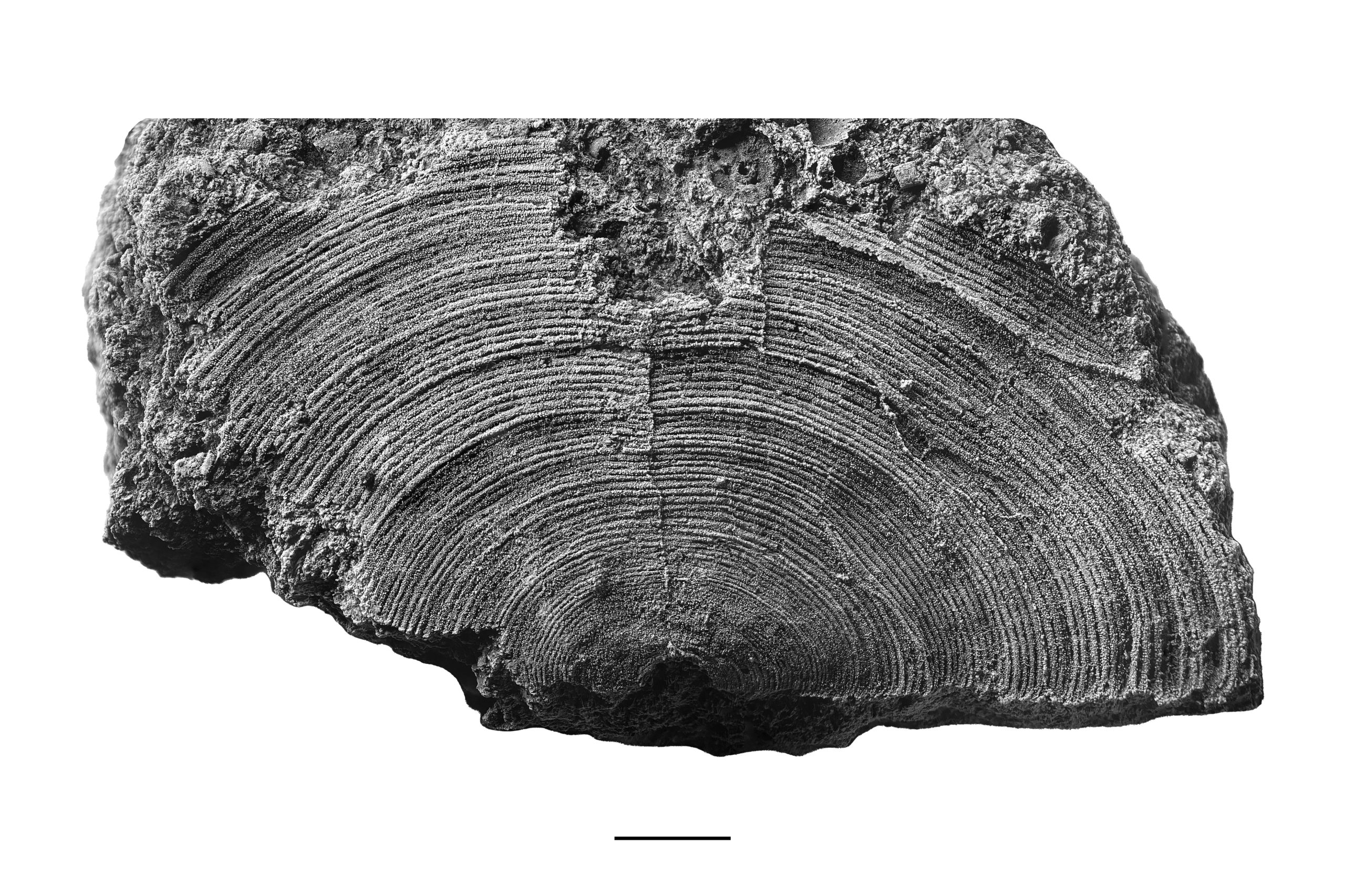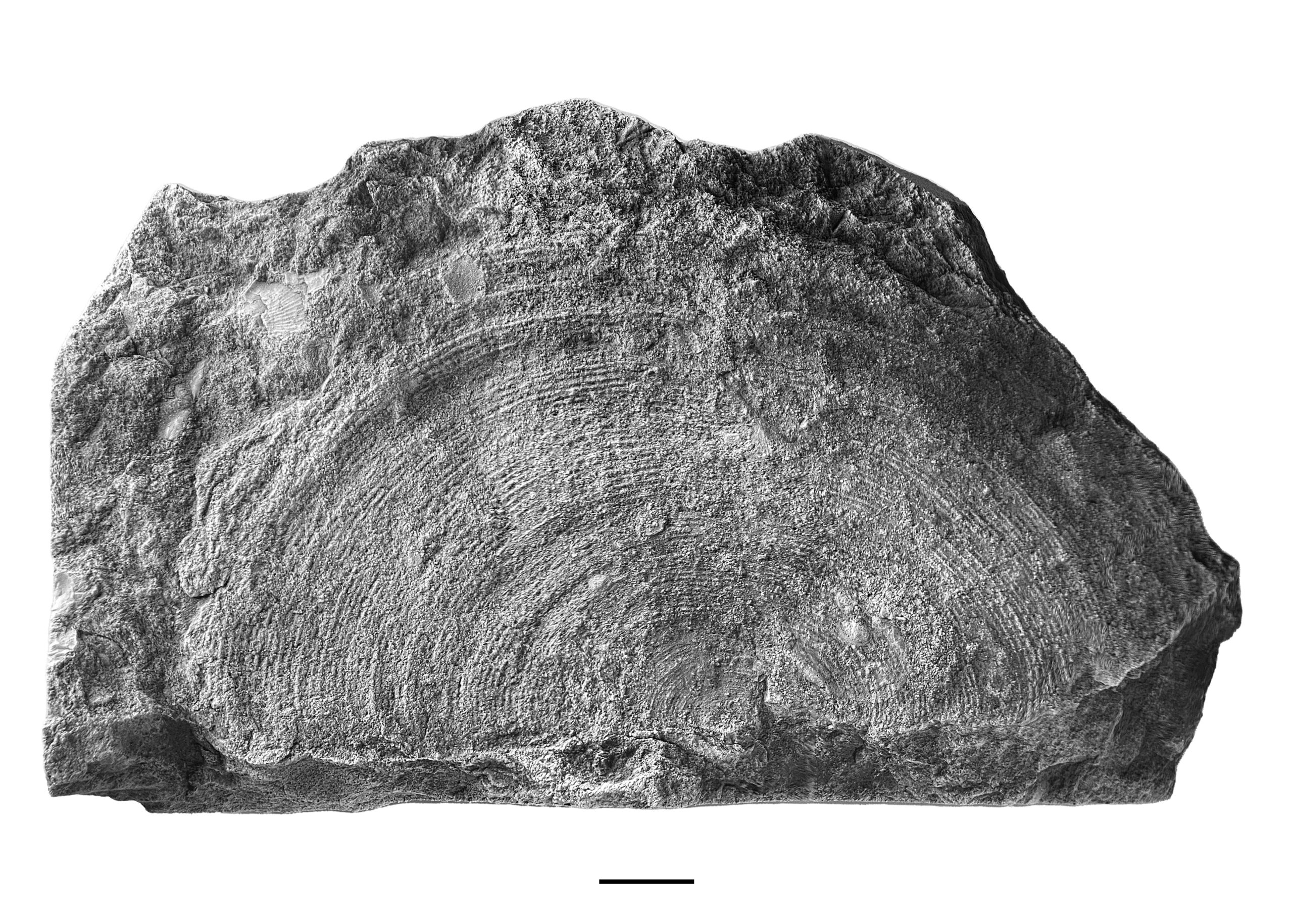The brachiopod Isogramma Meek and Worthen (1870) is challenging to identify when found by inexperienced collectors. These fossils appear as a half circle of sharp, equal-spaced concentric growth lines. All specimens appear flattened, making them difficult to identify as dimensional brachiopod shells. The shells are concavo-convex in life, but due to a “spongy” shell, they are readily compressed after the end of life. Stojanović-Kuzenko (2003) published unflattened figures of a new species, Isogramma serbica. The figures (Plate 1, figures 1-4) show the life morphology of Isogramma well.

Isogramma, the Isogrammidae, and the Dictyonellids
The Dictyonellids are a strange group. Chen and Shi (2016) called Isogramma “one of the most morphologically characteristic genera among Late Palaeozoic brachiopods.” The pair put together an evolutionary history of the genus, claiming rapid diversification after its origination but suffering a setback during a Mid-Carboniferous extinction event.
In the Visean—or the middle of the Mississippian subperiod—authors named 16 species of Isogramma. This number gradually fell into the Pennsylvanian subperiod, with recovery in the Moscovian and reaching another peak during the Kasimovian, occupied by 16 additional species. In total, 15 species are available by the end of the Gzhelin, which marks the end of the Carboniferous. Unfortunately, only five named species occurred at the start of the Permian, a number that was never again matched until the genera disappeared during the Late Permian.

Reports of unusual specimens of Isogramma
Cooper (1952) reported on unusual specimens from North Central Texas. The pedicle/ventral valve of the holotype of Isograma Renfrarum Cooper 1952 (USNM 111687) measures an astonishing 183 mm at its widest point. The specimen shown below is less than 50 mm in width.
A Brush Creek specimen of Isogramma
Sturgeon and Hoare (1968) reported Isogramma millepunctata from the Lower Mercer limestone within the Pottsville Group, an older group, and the Cambridge limestone. Cambridge is the name in Ohio for the Nadine limestone in Pennsylvania.
The specimen below comes from local decalcified limestone. Weathering softens the rock and turns it into a brown color. One could reduce a representative to dust with light to moderate pressure. This phenomenon produces fossils with exceptional preservation characteristics. Without a cemented matrix to hide details, many unique examples appear. Yet, specimens can break during recovery and need special care in storage.


References
- Cooper, G.A., 1952. Unusual specimens of the brachiopod family Isogrammidae. Journal of Paleontology, 26: 67–83
- Stojanović-Kuzenko S., 2003, A new carboniferous species of isogramma (dyctionellida, brachiopoda) from NW Serbia, Geoloski anali Balkanskoga poluostrva, Issue 65, pp. 47–53
- Sturgeon, M.T., Hoare, R.D., 1968, Pennsylvanian Brachiopods of Ohio, State of Ohio Division of Geological Survey, Bulletin 63, 95 pages, 22 plates.
- Z.Q. Chen, G.R. Shi, 2006, Isogramma Meek and Worthen, 1870 (Dictyonellida, Brachiopoda) from the upper Palaeozoic of East Asia: Implications for biogeography and evolutionary trends, Journal of Asian Earth Sciences, Volume 26, Issues 3–4, pages 405–423
